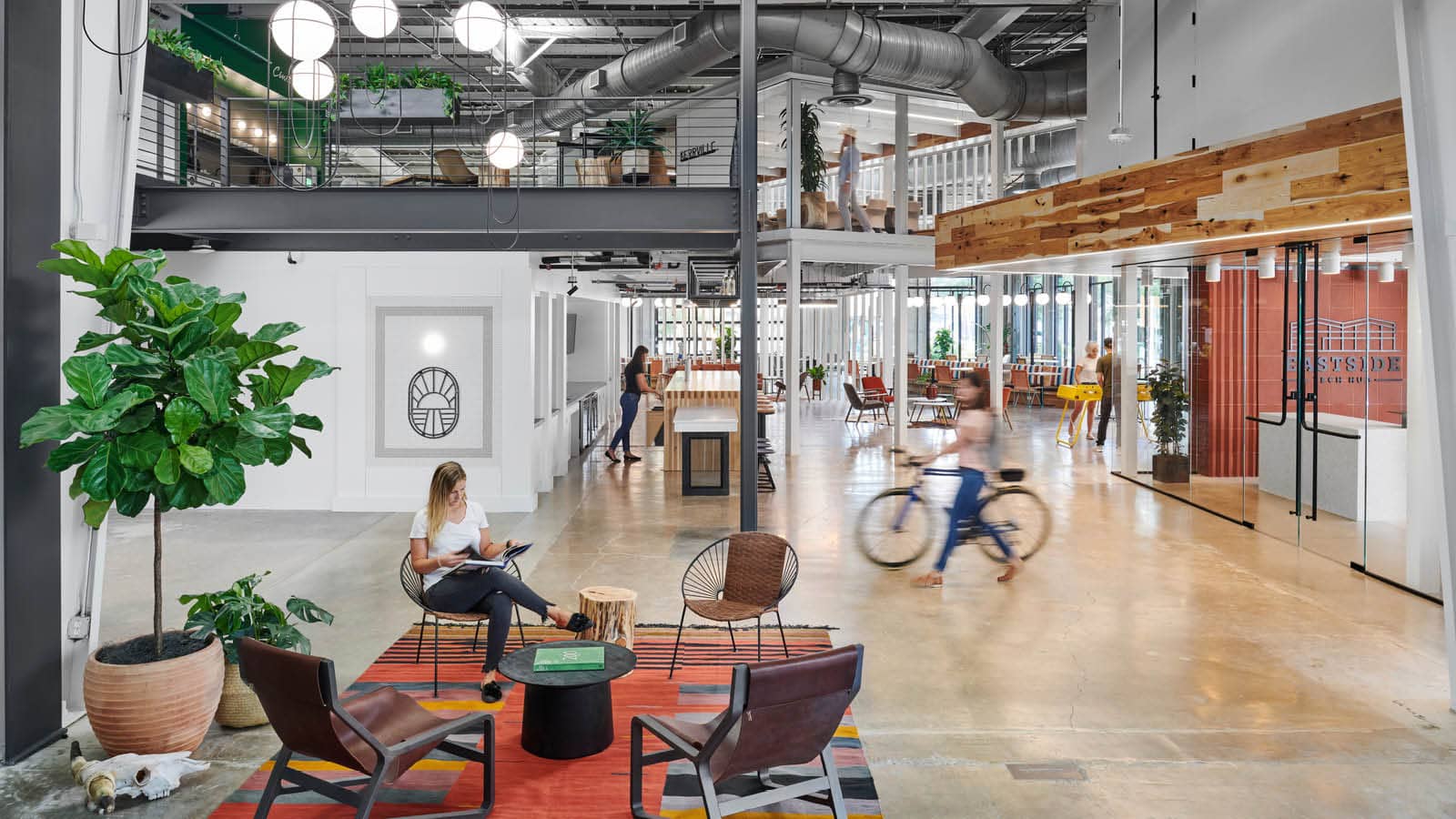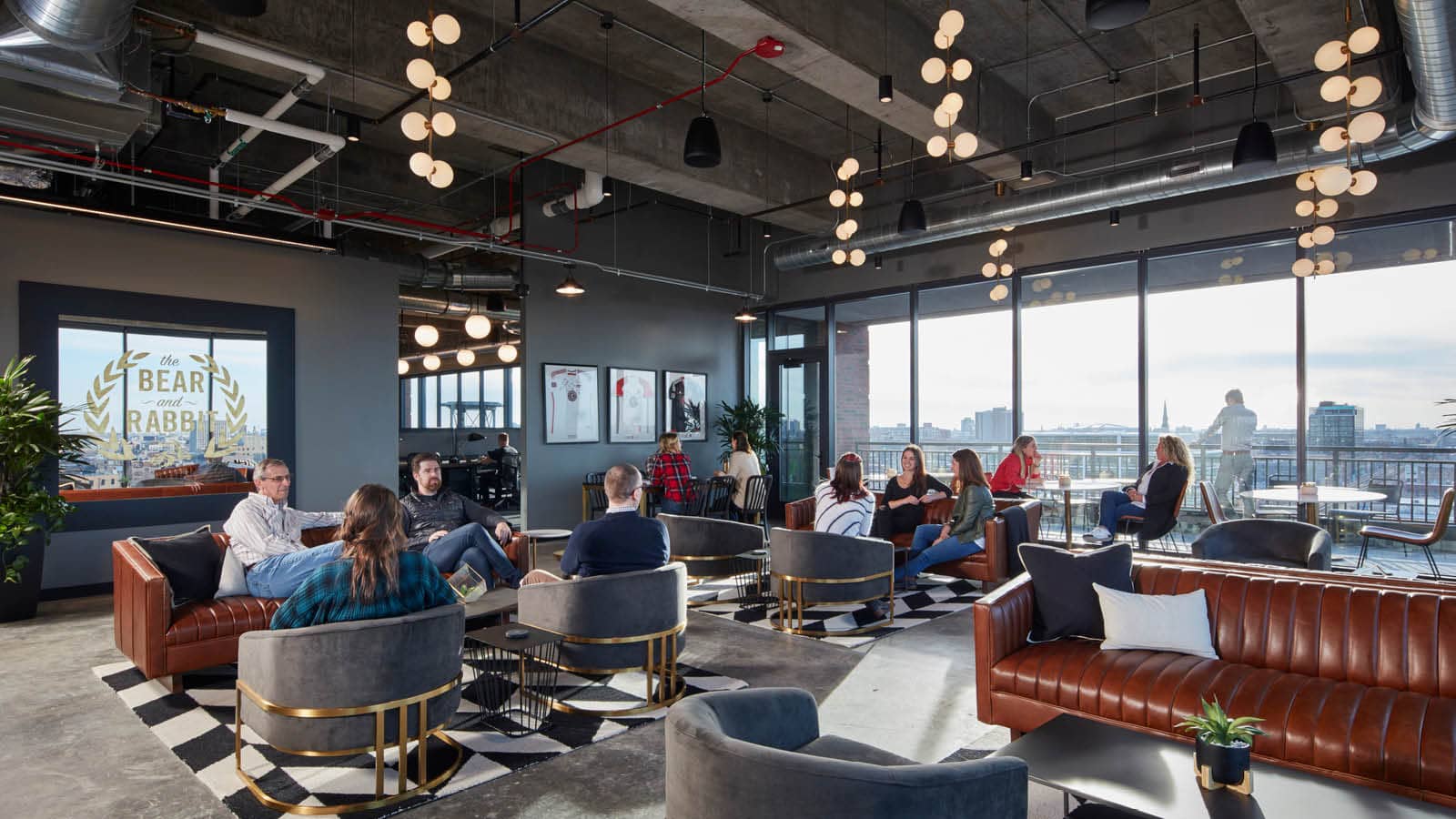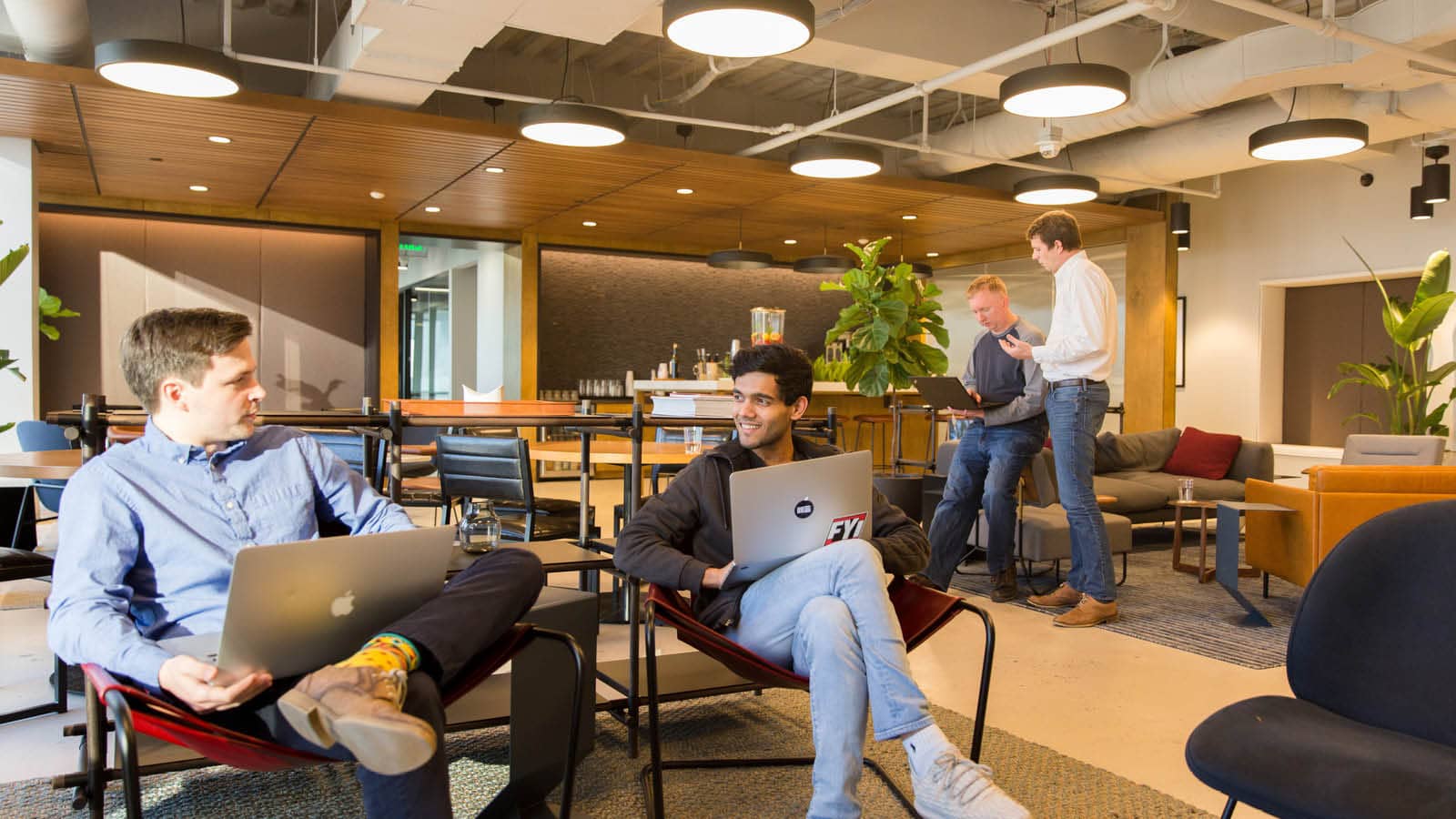IA QUARTERLY
IT’S NOT ABOUT COWORKING:
It's About Choice
These days, a company or organization that needs a new workplace to conduct business in and for whom speed-to-market is a topmost concern has a range of spatial options at their disposal. The spectrum runs the gamut from traditional leased or owned space—which still comprises the largest segment of the commercial real-estate industry—to more nimble solutions such as an ondemand office or a coworking facility. In fact, the latter is just one facet of the so-called “flexible” workplace category, an ever-expanding eco-system that includes:

A Calibrated Mix
For instance, companies can now curate a mix of different spatial typologies in order to accommodate both short- and long-term needs—and even to experiment with new working methodologies. As an example of the latter, a major financial services retailer in New York City has created several atypical branches to prototype a combination of customer and client engagement settings. In these environments, servicing of transactions can occur via automation while a variety of on-demand workspace types can benefit both the client and the bank. The client gains Class A workspace while the bank gains access to collaborative partners and opportunities



For many IA clients, enterprise solutions and shared spaces are both critical components of an evolving portfolio. Law firms and consumer product companies have been especially avid and early adopters of this hybrid approach. One IA client, a San Francisco tech company, outlines some advantages of augmenting a bespoke office with ready-to-go space: “As a company that continues to experience rapid growth, partnering with co-working providers on short-term solutions allows us to scale effectively and efficiently,” the firm’s director of global real-estate strategy explained. She and her team appreciate the agility that coworking facilities provide, “including flexible lease terms, custom design, and square footage that can expand or contract depending on our business needs.” It’s hard to predict the future, she adds—“to know what we will want or need in five years.” Another IA client, a global financial services firm, raises similar concerns: “We are in the midst of transforming our real-estate portfolio, rethinking and renovating key space into a more activity-based model,” the company’s design director explains, adding that the firm is also consolidating facilities in key markets. In these instances, the organization is leveraging coworking space, both custom designed and shared. “The benefit of this scenario is that we can use such facilities as swing space for complicated, multiphase projects and to house a large team temporarily,” she adds.
Inherent Challenges
While flexible space solutions provide many boons, they do pose challenges. For example, shared office models require a lot of connectivity. “Using coworking space is difficult due to Information Security requirements,” says the global financial services company’s design director. “We install our own technology into these spaces to ensure network security.” Another challenge is that the space is not customized to a client’s standards. Noise and especially privacy are also big concerns. Some departments deal with client financial matters on a daily basis and it’s hard to conduct confidential calls in an open office. Data collection is complicated in this flex-space world as well. “Data is very important to many of our clients, and some are dealing with information overload and fatigue,” IA co-president/CEO David Bourke explains. “It’s vital to determine the right information to capture, the correct way to analyze it, and how to use it effectively to ensure the organization’s goals are met to help support a more productive work environment.” Furthermore, the landscape of flexible office brands can be confusing to navigate. “Because coworking is such a growing segment of the market, one of our biggest challenges may be staying up to speed on all the new providers and new solutions,” one tech client lamented. Indeed, the facilities run by well-known brands are only part of the puzzle; now landlords, real-estate groups, and others are getting into the game, developing their own unique approach.



Design Firm as Strategic Partner and Advisor
Navigating this new landscape can be challenging, and for this reason clients and real estate professionals are looking to design firms to act as a strategic partner that brings value and expertise to the table. IA’s proficiency is to uncover and work on solutions that support a client’s real estate and space needs and to continually respond as they evolve over time. We serve as an agnostic advisor who can tease out the right mix of space types to be deployed. Key to utilizing said mix with success is having knowledge as the common denominator.
The options companies have at their disposal are many, and our challenge as designers is embrace the possibilities and work with clients and the real estate community to make the right decision.
